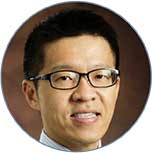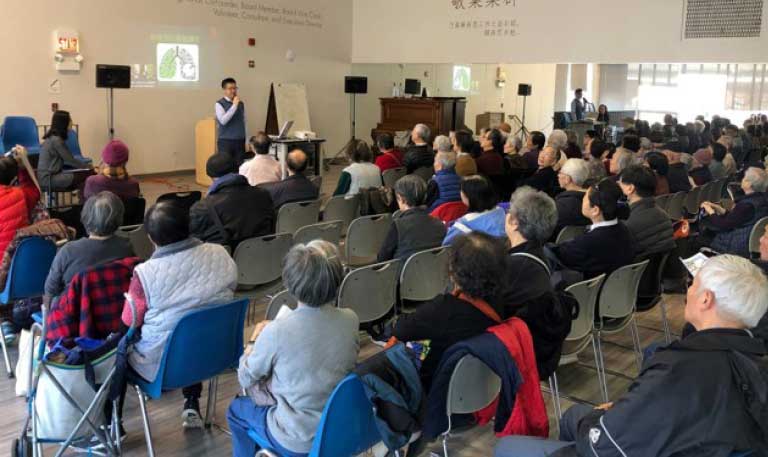
Chien-Ching Li, PhD, MPH

Chien-Ching Li, PhD, MPH

Chien-Ching Li, PhD, MPH
In his prior research, Chien-Ching Li, PhD, MPH, focused on promoting lung cancer screening in Chinese American men, a population that frequently smokes heavily. But last year, he applied for a CHEST grant that’s shifting his focus to another demographic: Chinese American women who do not smoke, especially those with limited English proficiency.
“They are developing lung cancer, and we don't know why,” said Dr. Li, an associate professor of Health Systems Management at Rush University.
In the United States, Asian American women who don’t smoke, and never have, are twice as likely to be diagnosed with lung cancer as white women with similar nonsmoking habits. In fact, 57% of Asian American women diagnosed with lung cancer never smoked cigarettes.
What’s behind this rise in lung cancer in women who have never smoked compared with men, and particularly in Asian American women? One possibility: While Chinese American women may never smoke themselves, they frequently live with partners or family members who do. (About 28% of Chinese American men smoke heavily, Dr. Li said.)
“We think secondhand smoke might be one of the key risk factors, because they’re living with people who smoke,” Dr. Li said. His prior research shows that the majority of Chinese American men in greater Chicagoland—89%—are married, and many of them smoke or have a history of smoking.
With the CHEST grant Dr. Li received in October 2023, he’s working to increase awareness among Chinese American women about the risks of secondhand smoke and “reduce the health disparity in lung cancer among women,” Dr. Li said.
Developing culturally sensitive materials for a high-risk group
While many lung cancer reduction efforts focus on people who smoke, there are plenty of pamphlets designed to inform about the risks incurred when breathing in secondhand smoke.
These handouts, however, aren’t always available in languages spoken by Chinese Americans. Nor is it as simple as hiring a translator; doing so may make the pamphlets readable to the women, but it won’t necessarily make the text culturally appropriate.
This is what Dr. Li—along with his coinvestigators, Alicia Matthews, PhD, a professor of clinical psychology at Columbia University, and Hong Liu, PhD, of the Midwest Asian Health Association—seeks to change, with funding from the CHEST grant. Their goal is four-pronged:
- Discovery: Dr. Li and his team are currently surveying Chinese American women who have never smoked but who live with people who smoke in greater Chicagoland. These surveys will help them learn more about what (if anything) this group knows about the health risks associated with secondhand smoke and other types of environmental smoke.
- Identify: These surveys, along with focus group interviews with select participants, will help reveal barriers standing in the way of reducing the women’s exposure to secondhand smoke—as well as ways to encourage habits to reduce risk.
- Develop: All the information gained through surveys and conversations will then be analyzed and used to craft targeted, translated, and culturally appropriate materials on secondhand smoke, conveying communication strategies the women can use to persuade their partners to quit smoking and ways to build a smoke-free household.
- Evaluate: The effectiveness of the new materials will be tested to assess the change in the women’s knowledge, as well as any uptick in taking steps to reduce exposure or sign up for screening.

Dr. Li provides lung health education at a community organization in Chicago’s Chinatown neighborhood.
Using the CHEST grant as a building block to more grants—and more information
Dr. Li and his collaborators are still in the early stages of using the CHEST grant: gathering up participants and surveying them.
But there’s much ahead. With the CHEST grant in hand, Dr. Li plans to apply for grants from the National Institutes of Health (NIH): first, an NIH Exploratory/Developmental Research Grant Award (R21) to help achieve that fourth aim of evaluating how the intervention works. And next, they’ll apply for an NIH Research Project Grant Program (R01), which will fund an even larger trial.
“Not many studies focus on identifying the risk factors with lung cancer associated with Chinese American [women who have never smoked],” Dr. Li said. “This is why we want to focus on this area to provide more knowledge and make more contributions to research.”